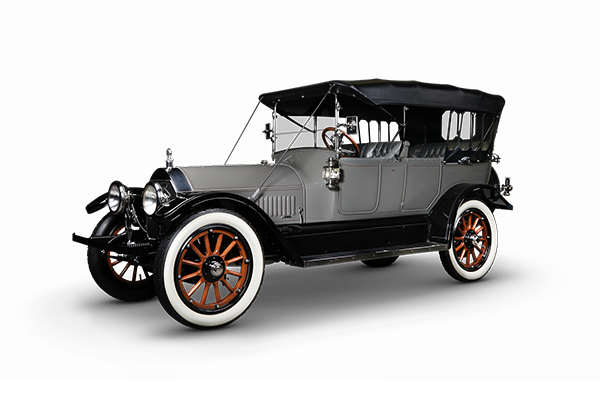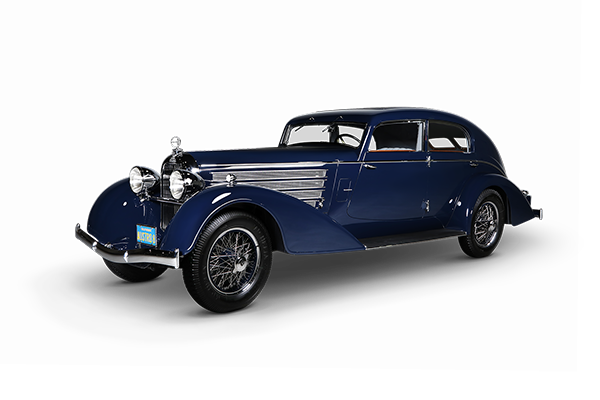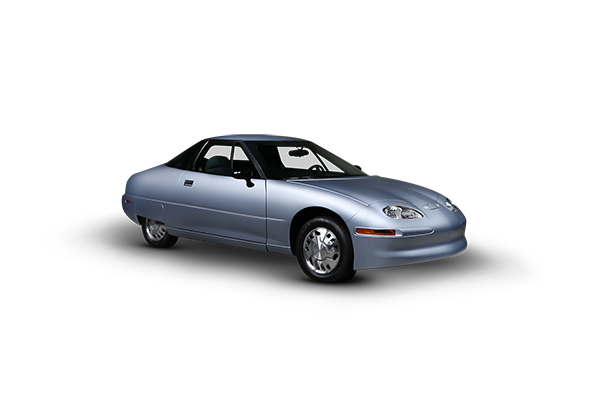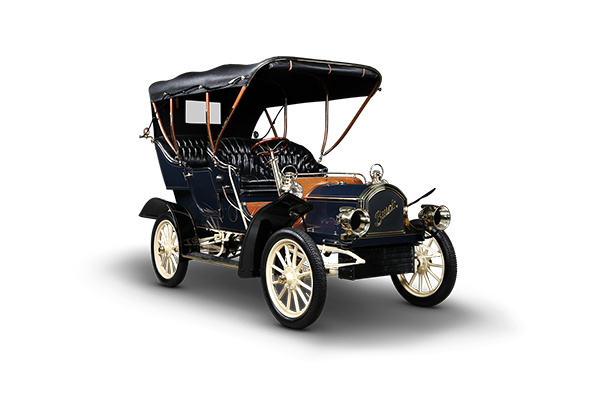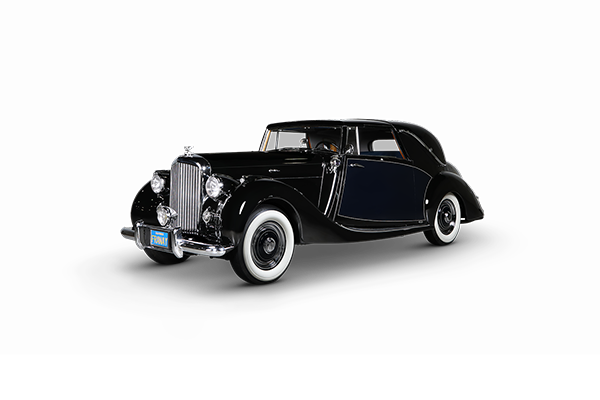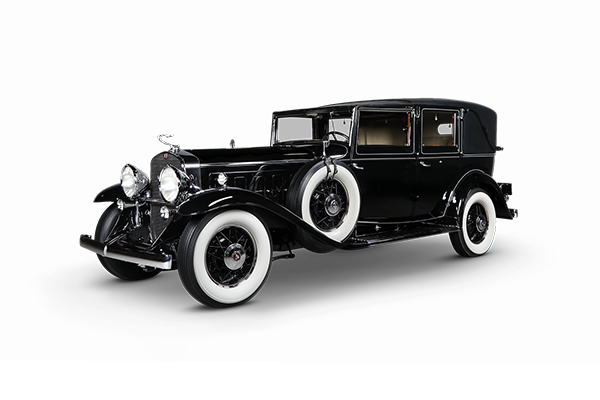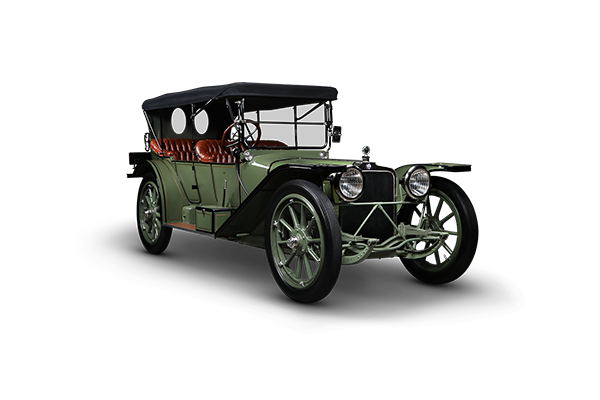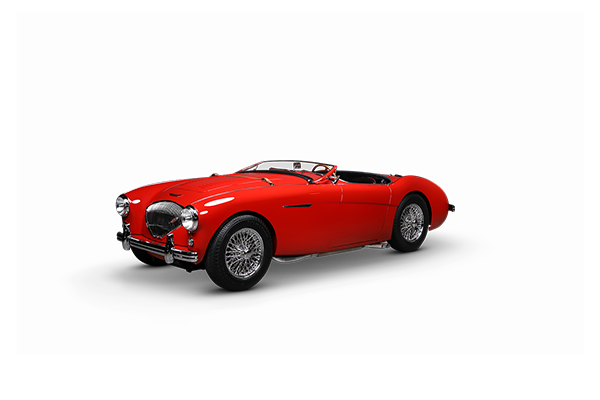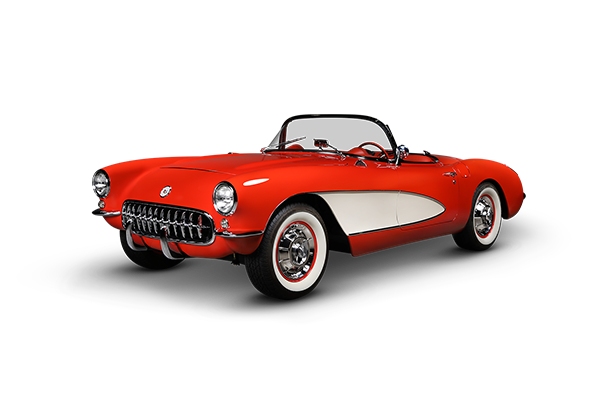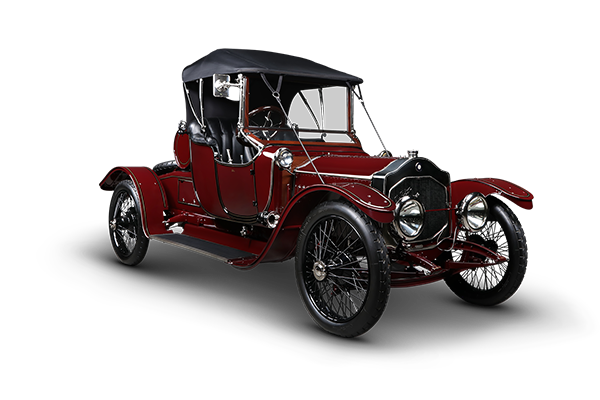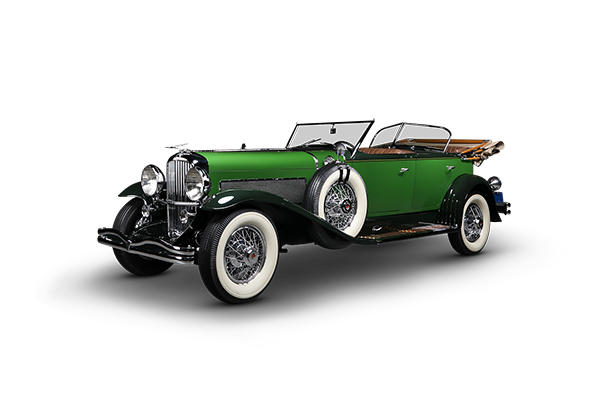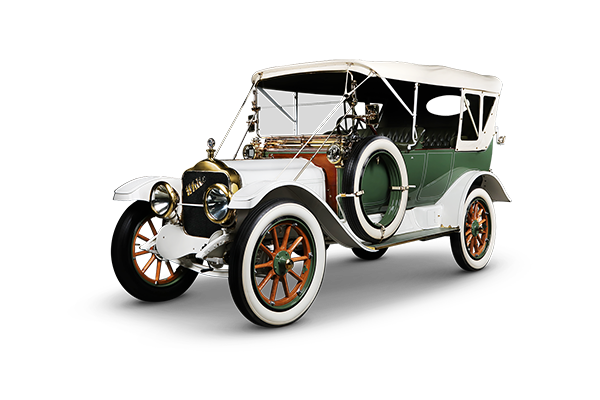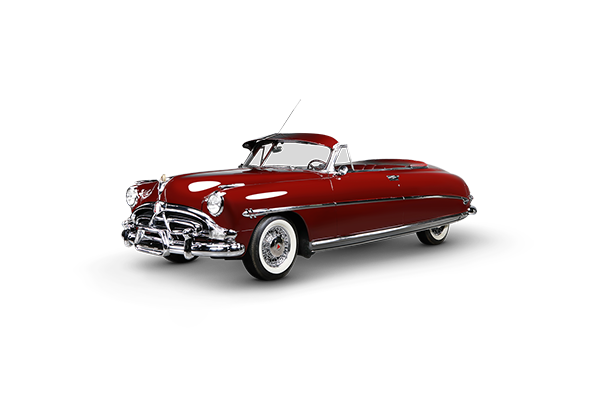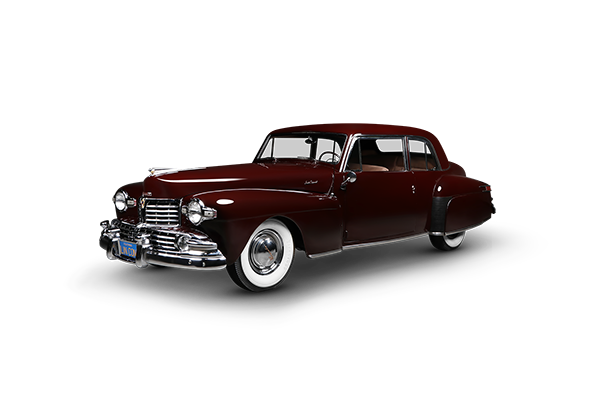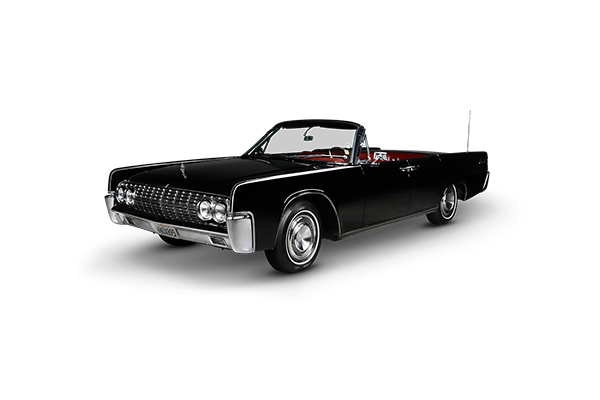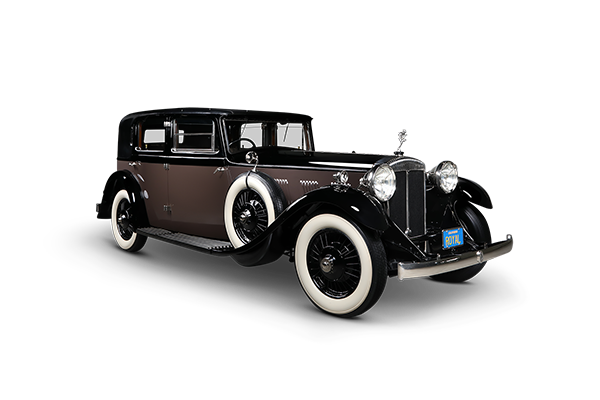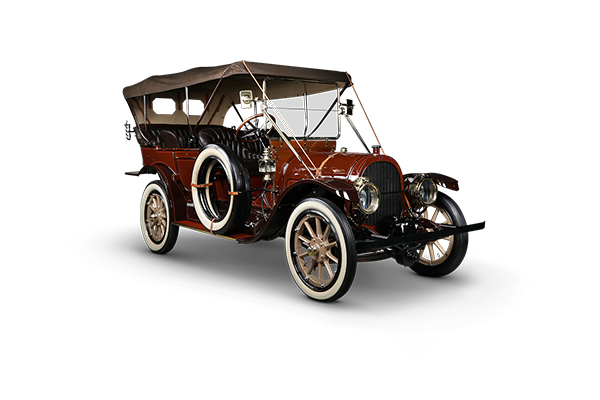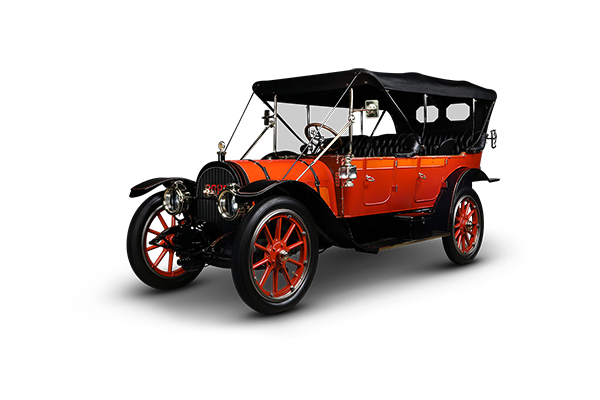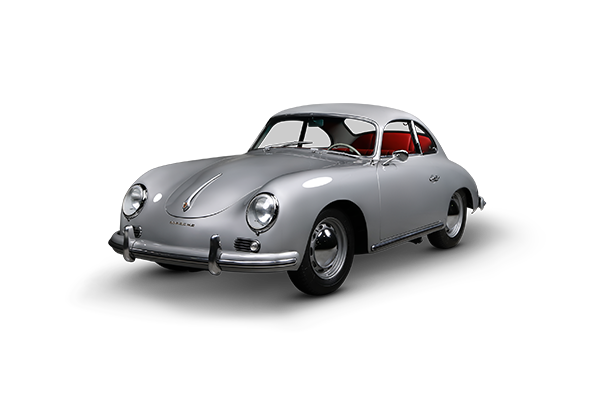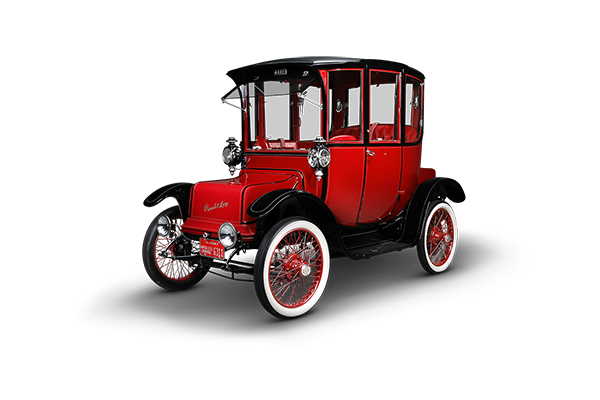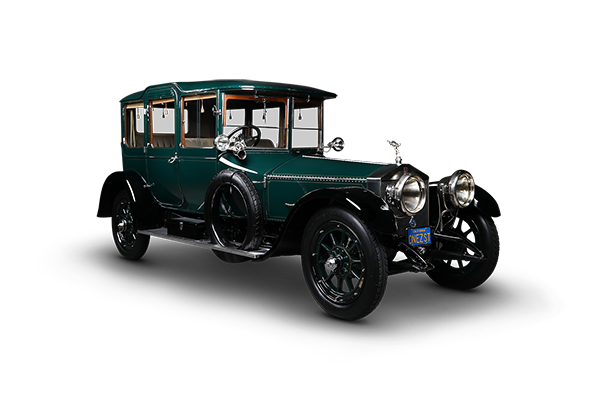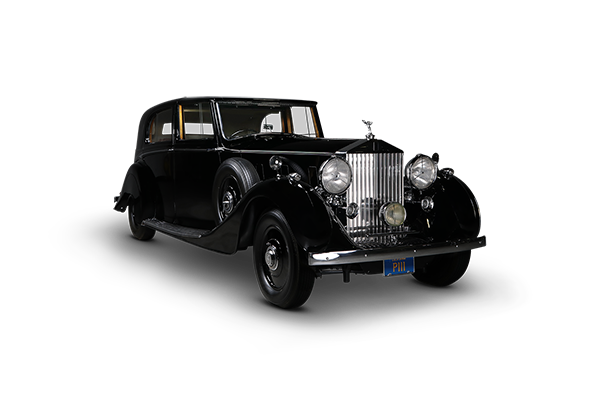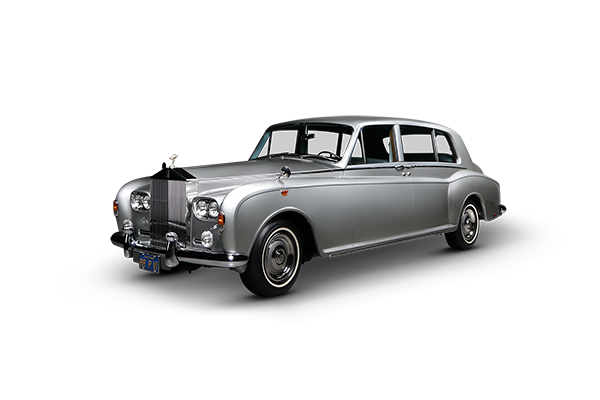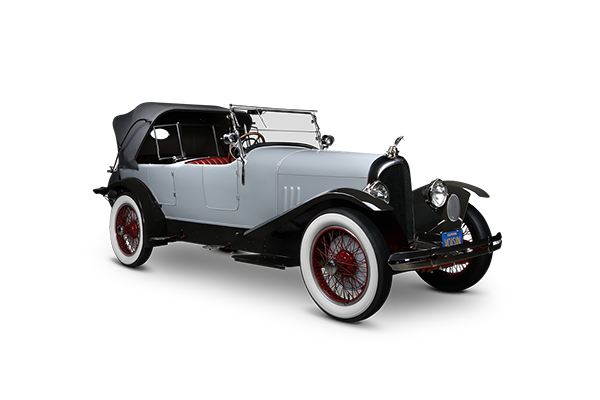-
 1914 Knox - Model 46, Little Six TouringKnox, which began producing autos in 1909, claimed their 1914 Model 45 was 'built to meet the growing demand for a high quality six-cylinder car. For the 383 built, the demand was not apparent, and it was the last year of production for Knox. The continued to build fire trucks for several more years.
1914 Knox - Model 46, Little Six TouringKnox, which began producing autos in 1909, claimed their 1914 Model 45 was 'built to meet the growing demand for a high quality six-cylinder car. For the 383 built, the demand was not apparent, and it was the last year of production for Knox. The continued to build fire trucks for several more years. -
 1932 Austro Daimler Alpine SedanPaul Daimler, son of automotive pioneer Gottlieb Daimler, founded the Austrian branch in Vienna in 1899. The firm produced some of the most innovative designs of the era with engineering by Ferdinand Porsche. The Alpine Sedan was built to order for a Mr. Moser in Switzerland, where the car remained until 1947 when it was shipped to South Africa. It changed hands several times and was finally purchased in the mid-1970s by well-known California auto importer and racing historian Otto Zipper. The ADR8 Alpine Sedan joined The Nethercutt Collection in 1982..
1932 Austro Daimler Alpine SedanPaul Daimler, son of automotive pioneer Gottlieb Daimler, founded the Austrian branch in Vienna in 1899. The firm produced some of the most innovative designs of the era with engineering by Ferdinand Porsche. The Alpine Sedan was built to order for a Mr. Moser in Switzerland, where the car remained until 1947 when it was shipped to South Africa. It changed hands several times and was finally purchased in the mid-1970s by well-known California auto importer and racing historian Otto Zipper. The ADR8 Alpine Sedan joined The Nethercutt Collection in 1982.. -
 1997 GM EV1General Motors leased over 800 EV1 cars out of 1100 manufactured with the provision that after the three-year leases were up, the cars reverted to the company. They were available in California and Arizona and could be serviced at designated Saturn dealers. The purpose of the EV1 was, in part, to satisfy California’s Zero-emissions vehicle mandate initiated in 1990. In late 2003, GM cancelled the EV1 program. Despite unfulfilled waiting lists and positive feedback from the customers, GM stated that it could not sell enough of the cars to make the EV1 profitable. GM also stated that the electric car venture was not a failure, and that the EV1 was doomed when the expected breakthrough in battery technology did not take place. The Nethercutt Collection was one of a handful of museums chosen by GM to receive a donations of an EV1 under the condition it would never be sold or attempted to make road worthy again.
1997 GM EV1General Motors leased over 800 EV1 cars out of 1100 manufactured with the provision that after the three-year leases were up, the cars reverted to the company. They were available in California and Arizona and could be serviced at designated Saturn dealers. The purpose of the EV1 was, in part, to satisfy California’s Zero-emissions vehicle mandate initiated in 1990. In late 2003, GM cancelled the EV1 program. Despite unfulfilled waiting lists and positive feedback from the customers, GM stated that it could not sell enough of the cars to make the EV1 profitable. GM also stated that the electric car venture was not a failure, and that the EV1 was doomed when the expected breakthrough in battery technology did not take place. The Nethercutt Collection was one of a handful of museums chosen by GM to receive a donations of an EV1 under the condition it would never be sold or attempted to make road worthy again. -
 1905 Buick TouringBuick’s famous ‘Valve-in-Head’ design started with the first Buick in 1903. Buick founder David D. Buick lost control of his firm early in 1904. It became the basis of William C. Durant’s
1905 Buick TouringBuick’s famous ‘Valve-in-Head’ design started with the first Buick in 1903. Buick founder David D. Buick lost control of his firm early in 1904. It became the basis of William C. Durant’s -
 1951 Bentley Mark VI Coupe DeVilleBuilt for the 1951 Paris Auto show by the French studio of Franay Carrossier for their exhibit booth, the elegant Coupe de Ville was a styling throwback to the 30’s. Franay, one of the world’s most eminent style houses, built elegant bodies for the elite of Europe and America for decades. Aristotle Onassis bought this Bentley at the Paris Show for his wife, Athina Mary Livanos Onassis. Also on exhibit was a Franay-bodied Roll-Royce that Mr. Onassis bought for himself.
1951 Bentley Mark VI Coupe DeVilleBuilt for the 1951 Paris Auto show by the French studio of Franay Carrossier for their exhibit booth, the elegant Coupe de Ville was a styling throwback to the 30’s. Franay, one of the world’s most eminent style houses, built elegant bodies for the elite of Europe and America for decades. Aristotle Onassis bought this Bentley at the Paris Show for his wife, Athina Mary Livanos Onassis. Also on exhibit was a Franay-bodied Roll-Royce that Mr. Onassis bought for himself. -
 1930 Cadillac 452A Town CabrioletOne of the first people to order the luxurious new Cadillac was legendary film director Cecil B. DeMille. This beautiful Fleetwood Transformable Town Cabriolet was to become one of DeMille’s favorite cars. A true auto enthusiast, he not only enjoyed being chauffeured around town in this stately Cadillac, but he also liked to slip behind the wheel on occasion. This is one of only nine Transformable Town Cabriolets built.
1930 Cadillac 452A Town CabrioletOne of the first people to order the luxurious new Cadillac was legendary film director Cecil B. DeMille. This beautiful Fleetwood Transformable Town Cabriolet was to become one of DeMille’s favorite cars. A true auto enthusiast, he not only enjoyed being chauffeured around town in this stately Cadillac, but he also liked to slip behind the wheel on occasion. This is one of only nine Transformable Town Cabriolets built. -
 1914 American Model 644 Underslung TouringThis American Underslung is the 6th from the last produced. 4500 American Underslung cars were built 1906 thru 1914, only 27 are now known to exist. The “underslung” chassis lowered the overall profile of the American a full 10 inches, giving it a racy, nimble appearance. Designer Fred Tone accomplished the underslung look by turning the frame upside-down and mounting the springs above the axles.
1914 American Model 644 Underslung TouringThis American Underslung is the 6th from the last produced. 4500 American Underslung cars were built 1906 thru 1914, only 27 are now known to exist. The “underslung” chassis lowered the overall profile of the American a full 10 inches, giving it a racy, nimble appearance. Designer Fred Tone accomplished the underslung look by turning the frame upside-down and mounting the springs above the axles. -
 1955 Austin Healey 100M LeMans RoadsterThe Austin-Healey 100 created a sensation when first shown in America. Enthusiast magazines hailed the car for its sporty good looks and excellent performance. The 100M or “LeMans” model had higher performance and a louvered hood with leather straps like the LeMans racing Austin-Healey’s. The "100" references the Healey's ability to reach 100mph.
1955 Austin Healey 100M LeMans RoadsterThe Austin-Healey 100 created a sensation when first shown in America. Enthusiast magazines hailed the car for its sporty good looks and excellent performance. The 100M or “LeMans” model had higher performance and a louvered hood with leather straps like the LeMans racing Austin-Healey’s. The "100" references the Healey's ability to reach 100mph. -
 1957 Chevrolet CorvetteAmerica’s true sport car. The Corvette, launched in 1953, finally became a performance car in 1955 with the introduction of the small-block V-8. This beautiful roadster is equipped with Dual 4-barrel carburetors, 4-speed transmission, and dual exhausts.
1957 Chevrolet CorvetteAmerica’s true sport car. The Corvette, launched in 1953, finally became a performance car in 1955 with the introduction of the small-block V-8. This beautiful roadster is equipped with Dual 4-barrel carburetors, 4-speed transmission, and dual exhausts. -
 1912 De Dion Bouton RoadsterDe Dion Bouton pioneered V-8 technology starting in 1906 when they built six experimental 6-cylinder cars and six V-8 experimental cars and tested them each for over 10,000 miles. The results were unanimous in favor of the V-8. Production was begun in 1909, the first production V-8 in history. The new engine was first shown at the 1909 Turin Auto show. And in 1909 De Dion Bouton patented the fork & blade connecting rod. From 1909 through 1918 twelve sizes of the engine were built. In 1909 De Dion-Bouton introduced the world’s first production V-8 engine. This beautiful Roadster is similarly equipped. The V-8 engine produces great low-speed torque and was very smooth in operation. This automobile was imported from France and sold to a company in Philadelphia. In the mid-1930’s, Henry Ford himself, bought this car for his museum in Dearborn, MI.
1912 De Dion Bouton RoadsterDe Dion Bouton pioneered V-8 technology starting in 1906 when they built six experimental 6-cylinder cars and six V-8 experimental cars and tested them each for over 10,000 miles. The results were unanimous in favor of the V-8. Production was begun in 1909, the first production V-8 in history. The new engine was first shown at the 1909 Turin Auto show. And in 1909 De Dion Bouton patented the fork & blade connecting rod. From 1909 through 1918 twelve sizes of the engine were built. In 1909 De Dion-Bouton introduced the world’s first production V-8 engine. This beautiful Roadster is similarly equipped. The V-8 engine produces great low-speed torque and was very smooth in operation. This automobile was imported from France and sold to a company in Philadelphia. In the mid-1930’s, Henry Ford himself, bought this car for his museum in Dearborn, MI. -
 1934 Duesenberg Dual Cowl PhaetonKnown as America’s mightiest motorcar, the Model J Duesenberg was race-bred. The Duesenberg brothers won the Indianapolis 500 three times. Performance was as important as style in a Duesenberg. It was the fastest production car produced in the 1930’s. The unusual rear windshield provided comfort for the rear seated passengers. This Duesenberg won “Best of Show” At the Pebble Beach Concourse d’Elegance in 1969.
1934 Duesenberg Dual Cowl PhaetonKnown as America’s mightiest motorcar, the Model J Duesenberg was race-bred. The Duesenberg brothers won the Indianapolis 500 three times. Performance was as important as style in a Duesenberg. It was the fastest production car produced in the 1930’s. The unusual rear windshield provided comfort for the rear seated passengers. This Duesenberg won “Best of Show” At the Pebble Beach Concourse d’Elegance in 1969. -
 1912 White Model GF Sixty, 7-Passenger TouringLike many automobile manufacturers, White began in the business making sewing machines. The White House used White automobiles for Presidents Theodore Roosevelt and William Taft. In 1910, gasoline engines took over steam powered automobiles and selling trucks augmented the line in the teens. The company deleted automobile production in favor of trucks during the 1920’s.
1912 White Model GF Sixty, 7-Passenger TouringLike many automobile manufacturers, White began in the business making sewing machines. The White House used White automobiles for Presidents Theodore Roosevelt and William Taft. In 1910, gasoline engines took over steam powered automobiles and selling trucks augmented the line in the teens. The company deleted automobile production in favor of trucks during the 1920’s. -
 1952 Hudson Hornet Twin-H Convertible BroughamOnly 360 Hudson Hornet Convertibles were built in 1952. A total of 35,000 Hudson Hornets were built in 1952 and only 360 were convertibles. Hudson Hornets won 27 NASCAR races out of a total of 34 entered in 1952. The Hudson Motor Car Co. built cars from 1909-1957. The six-cylinder Twin-H (two carburetors) was very efficient, fast, and very comfortable.
1952 Hudson Hornet Twin-H Convertible BroughamOnly 360 Hudson Hornet Convertibles were built in 1952. A total of 35,000 Hudson Hornets were built in 1952 and only 360 were convertibles. Hudson Hornets won 27 NASCAR races out of a total of 34 entered in 1952. The Hudson Motor Car Co. built cars from 1909-1957. The six-cylinder Twin-H (two carburetors) was very efficient, fast, and very comfortable. -
 1947 Lincoln ContinentalInspired by Edsel Ford, who was the head of Ford Motor Company’s luxury car division following the acquisition of Lincoln from Henry M. And Wilfred C. Leland in 1922, the first Continental was designed for Edsel’s personal use in 1939. In 1939, Edsel drove his Continental around Boca Raton, Florida, where he was stopped so many times by wealthy people requesting to buy a car like his, Edsel decided to put the Continental into General Motors, now one of the world’s largest corporations. The car was purchased new by Doctors C.N. and Jess Scott, Veterinarians of Mound City, Missouri. Only 750 total were produced.
1947 Lincoln ContinentalInspired by Edsel Ford, who was the head of Ford Motor Company’s luxury car division following the acquisition of Lincoln from Henry M. And Wilfred C. Leland in 1922, the first Continental was designed for Edsel’s personal use in 1939. In 1939, Edsel drove his Continental around Boca Raton, Florida, where he was stopped so many times by wealthy people requesting to buy a car like his, Edsel decided to put the Continental into General Motors, now one of the world’s largest corporations. The car was purchased new by Doctors C.N. and Jess Scott, Veterinarians of Mound City, Missouri. Only 750 total were produced. -
 1962 Lincoln ContinentalThe only 4-door convertible built in America in 1962. Only 3,212 4-door Convertibles were built in 1962.
1962 Lincoln ContinentalThe only 4-door convertible built in America in 1962. Only 3,212 4-door Convertibles were built in 1962. -
 1931 Daimler Double Six - Royal LimousineFrom the very first days of motoring, the British Daimler was the automobile of choice for British Royalty. In 1897 the Prince of Wales, later to become King Edward VII, ordered a Coventry built Daimler and the tradition has continued to this day. This 1931 Daimler was reported to have been part of the Royal fleet used at Buckingham Palace.
1931 Daimler Double Six - Royal LimousineFrom the very first days of motoring, the British Daimler was the automobile of choice for British Royalty. In 1897 the Prince of Wales, later to become King Edward VII, ordered a Coventry built Daimler and the tradition has continued to this day. This 1931 Daimler was reported to have been part of the Royal fleet used at Buckingham Palace. -
 1910 Pierce Arrow – Model 48 7-Passenger TouringPierce-Arrow was one of the finest automobiles built in America, had been refined to such high quality in 1910, that the chassis remained virtually unchanged for the next nine years. The stylish body is made entirely of cast aluminum. This car was the “Grand Marshall’s” car in the 2009 Rose Parade. The Grand Marshall was TV Chef, Emeril Lagasse.
1910 Pierce Arrow – Model 48 7-Passenger TouringPierce-Arrow was one of the finest automobiles built in America, had been refined to such high quality in 1910, that the chassis remained virtually unchanged for the next nine years. The stylish body is made entirely of cast aluminum. This car was the “Grand Marshall’s” car in the 2009 Rose Parade. The Grand Marshall was TV Chef, Emeril Lagasse. -
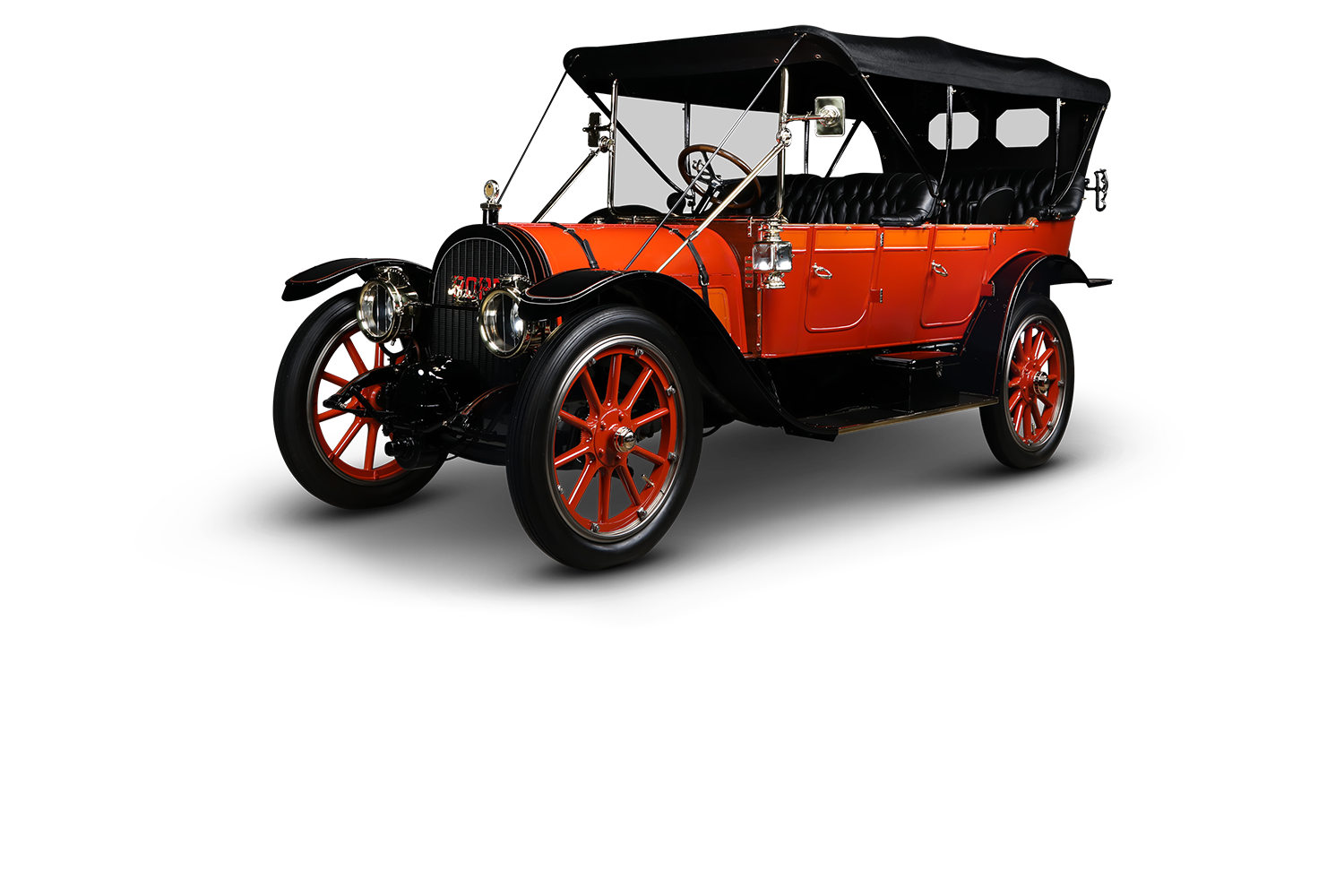 1911 Pope Hartford Model Y, 7-Passenger TouringThe 1911 Pope-Harford, a product of Colonel Albert Pope’s empire, was refined and powerful. It featured a 4-speed transmission and an innovative overhead valve engine. Despite its sedate looks, it was quite fast and was the choice for police cars, ambulances, and fire Wagons. This car was the “Mayor’s Car” in the 2008 Pasadena Rose Parade. This is one of only four 6-cylinder Pope Hartford’s known to still exist.
1911 Pope Hartford Model Y, 7-Passenger TouringThe 1911 Pope-Harford, a product of Colonel Albert Pope’s empire, was refined and powerful. It featured a 4-speed transmission and an innovative overhead valve engine. Despite its sedate looks, it was quite fast and was the choice for police cars, ambulances, and fire Wagons. This car was the “Mayor’s Car” in the 2008 Pasadena Rose Parade. This is one of only four 6-cylinder Pope Hartford’s known to still exist. -
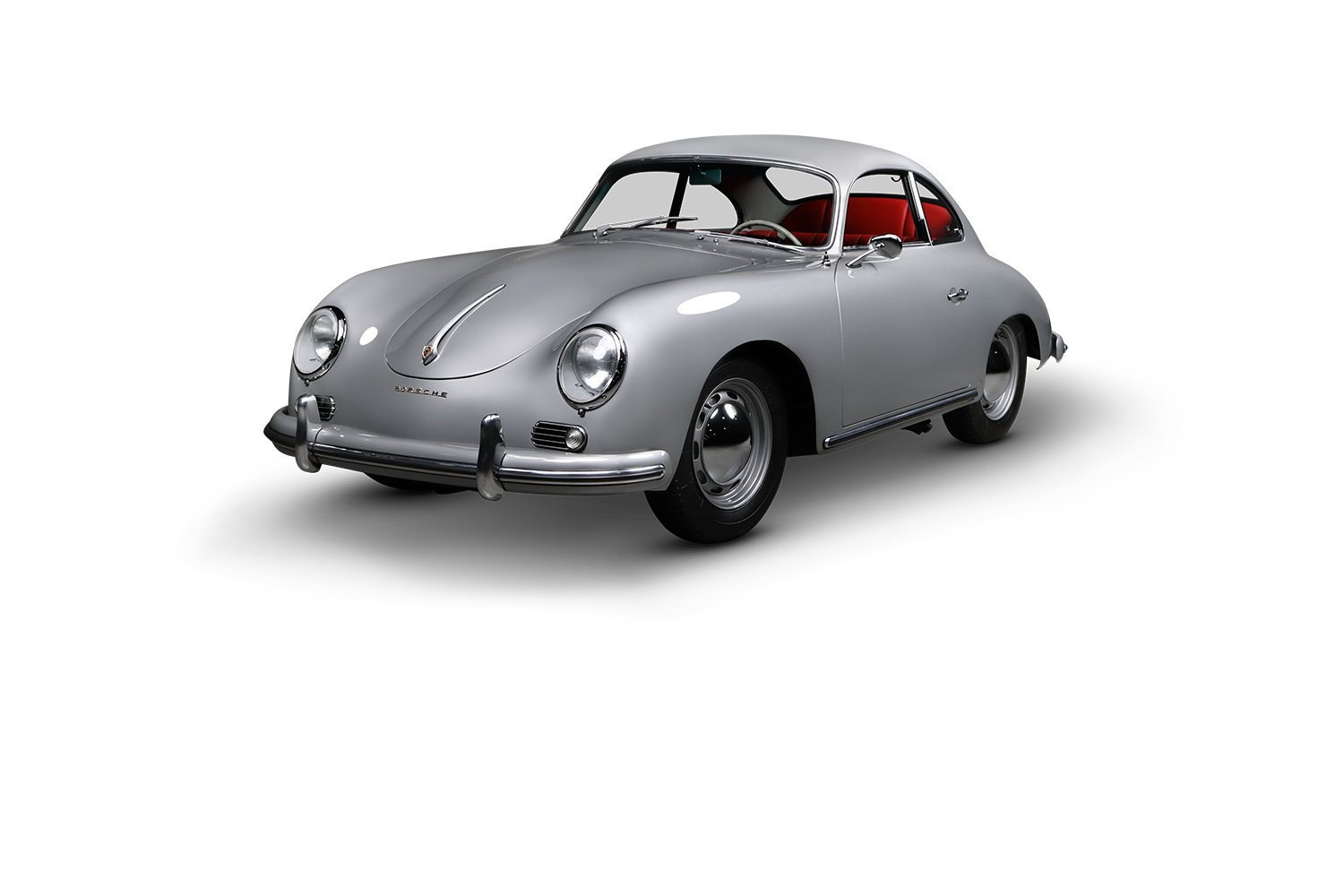 1956 Porsche 356A 1600S CoupeThe 1956 Porsche 356A was a great sales success with triple the sales from the earlier 356, over 21,000 were sold. The car was nimble, sporty, economical, and very easy to drive. Porsche enthusiasts believe the 356A of the late 1950’s and 1960’s was one of the finest built. This car was donated to the Collection by Roderick Moon, the original owner.
1956 Porsche 356A 1600S CoupeThe 1956 Porsche 356A was a great sales success with triple the sales from the earlier 356, over 21,000 were sold. The car was nimble, sporty, economical, and very easy to drive. Porsche enthusiasts believe the 356A of the late 1950’s and 1960’s was one of the finest built. This car was donated to the Collection by Roderick Moon, the original owner. -
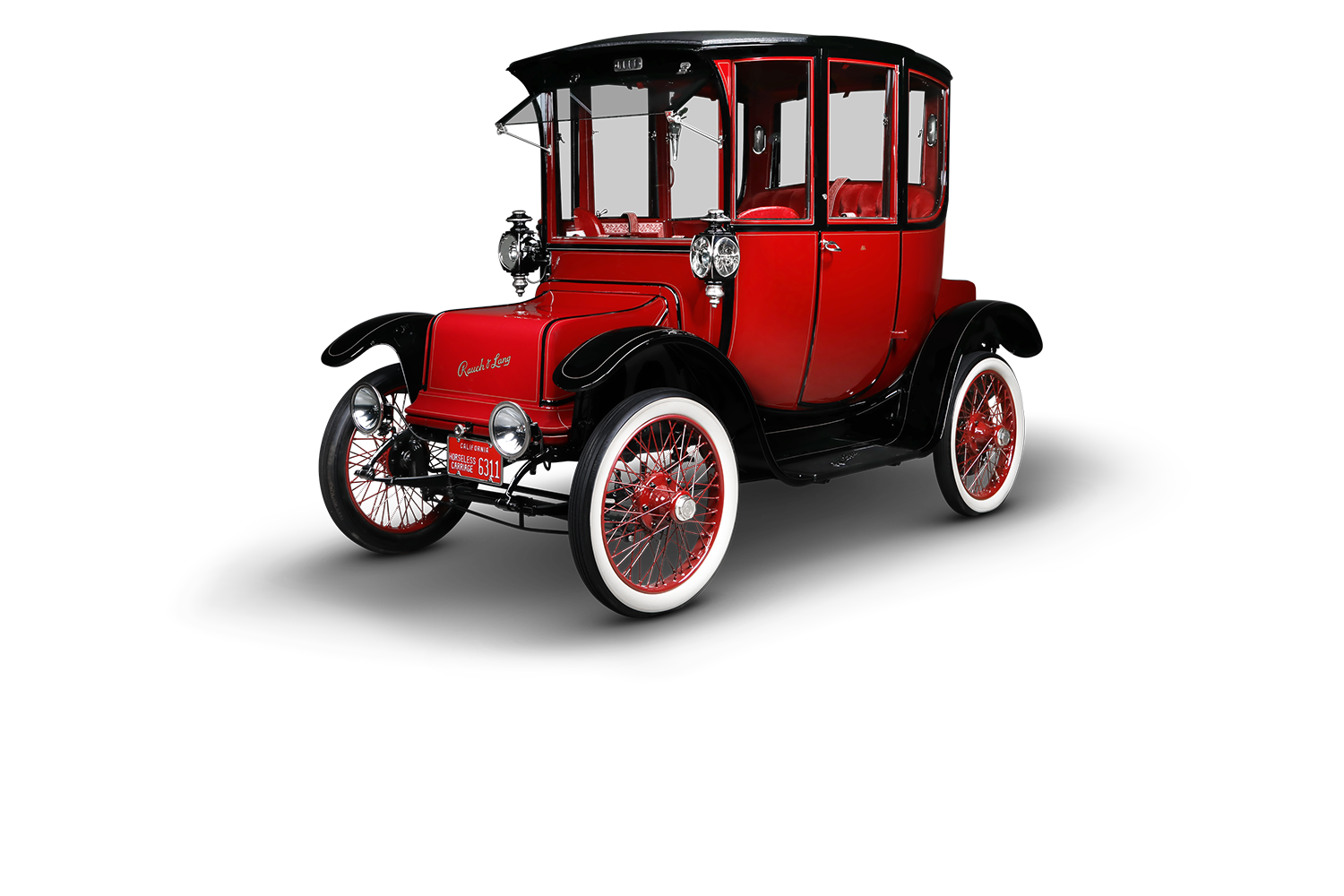 1914 Rauch & Lang Model B4, Electric BroughamRauch and Lang electric automobiles were quiet, easy to operate and efficient. However, internal combustion engine technology advanced at a faster pace than battery powered electrics and doomed the electric car.
1914 Rauch & Lang Model B4, Electric BroughamRauch and Lang electric automobiles were quiet, easy to operate and efficient. However, internal combustion engine technology advanced at a faster pace than battery powered electrics and doomed the electric car. -
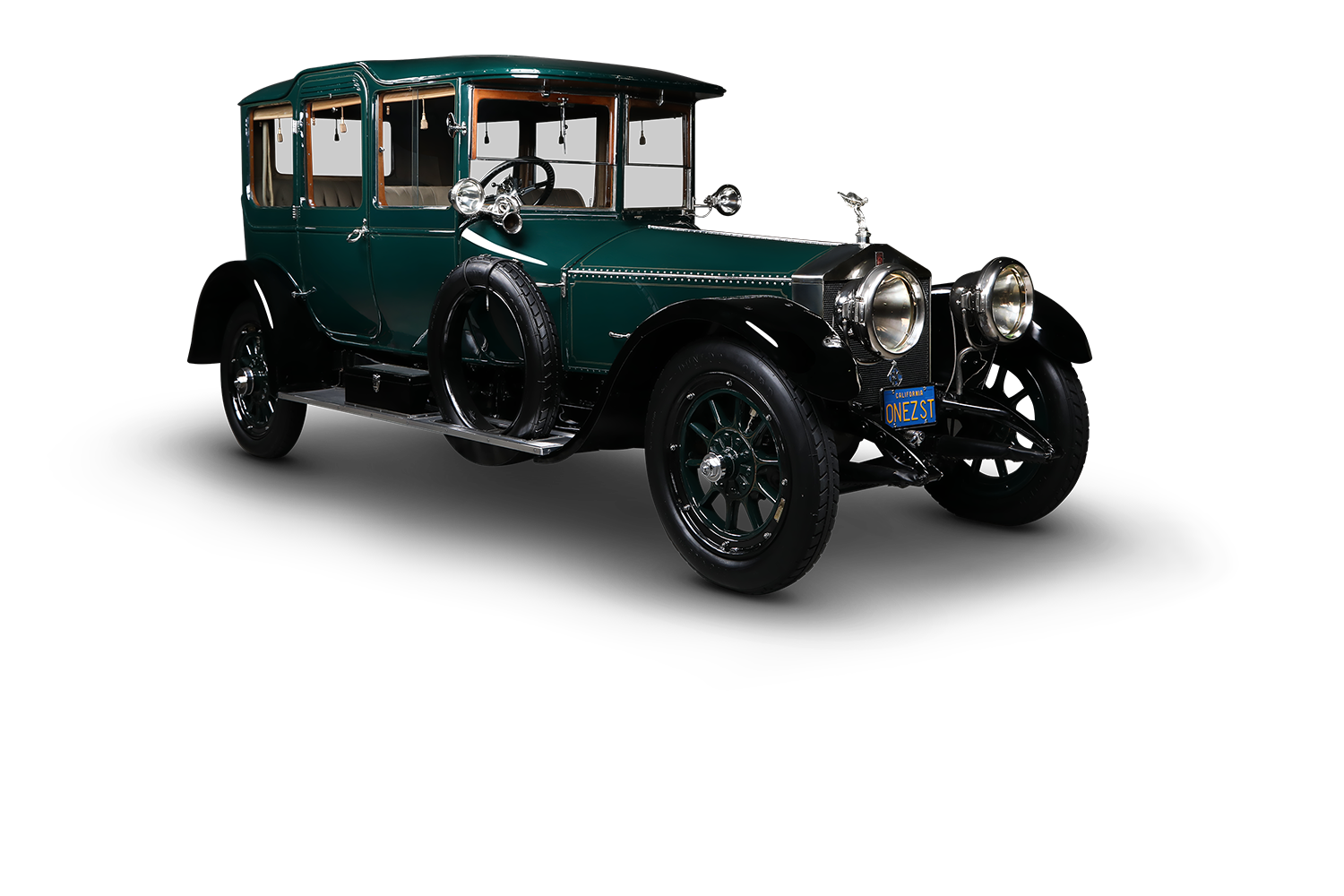 1913 Rolls Royce Silver Ghost / Town CarriageThis elegant, closed car has very stylish lines with a distinct sporting flair, which was unusual for Rolls-Royce. The Silver Ghost 40/50 H.P. engine was an engineering masterpiece that was smooth & powerful. This elegant Town Carriage was first registered to Cecil Chandlis of Sussex, England.
1913 Rolls Royce Silver Ghost / Town CarriageThis elegant, closed car has very stylish lines with a distinct sporting flair, which was unusual for Rolls-Royce. The Silver Ghost 40/50 H.P. engine was an engineering masterpiece that was smooth & powerful. This elegant Town Carriage was first registered to Cecil Chandlis of Sussex, England. -
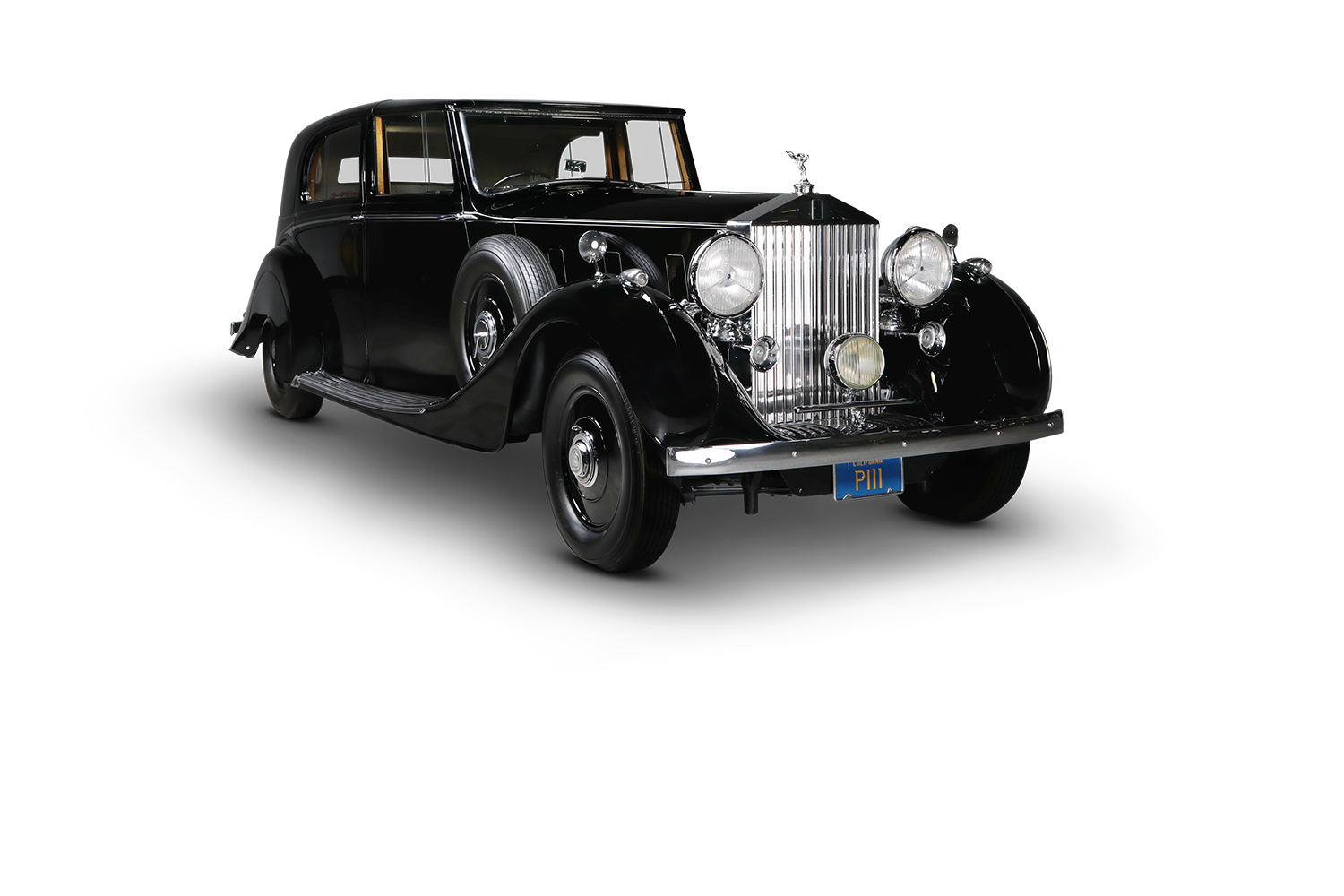 1937 Rolls-Royce Phantom III Sedanca de VilleThe V-12 engine of this fabulous Phantom III has direct ties to the Rolls-Royce aircraft engine that helped win World War II. Smooth, powerful, and built without regard to price, the Phantom III is one of the finest automobiles produced in the 1930’s. The original owner of this car was the Honorable W.G. Bethell of Westminster, London, England. He was the son of Sir John Henry Bethell, 1st Baron Bethell. There were only 1241 Phantom III's Built.
1937 Rolls-Royce Phantom III Sedanca de VilleThe V-12 engine of this fabulous Phantom III has direct ties to the Rolls-Royce aircraft engine that helped win World War II. Smooth, powerful, and built without regard to price, the Phantom III is one of the finest automobiles produced in the 1930’s. The original owner of this car was the Honorable W.G. Bethell of Westminster, London, England. He was the son of Sir John Henry Bethell, 1st Baron Bethell. There were only 1241 Phantom III's Built. -
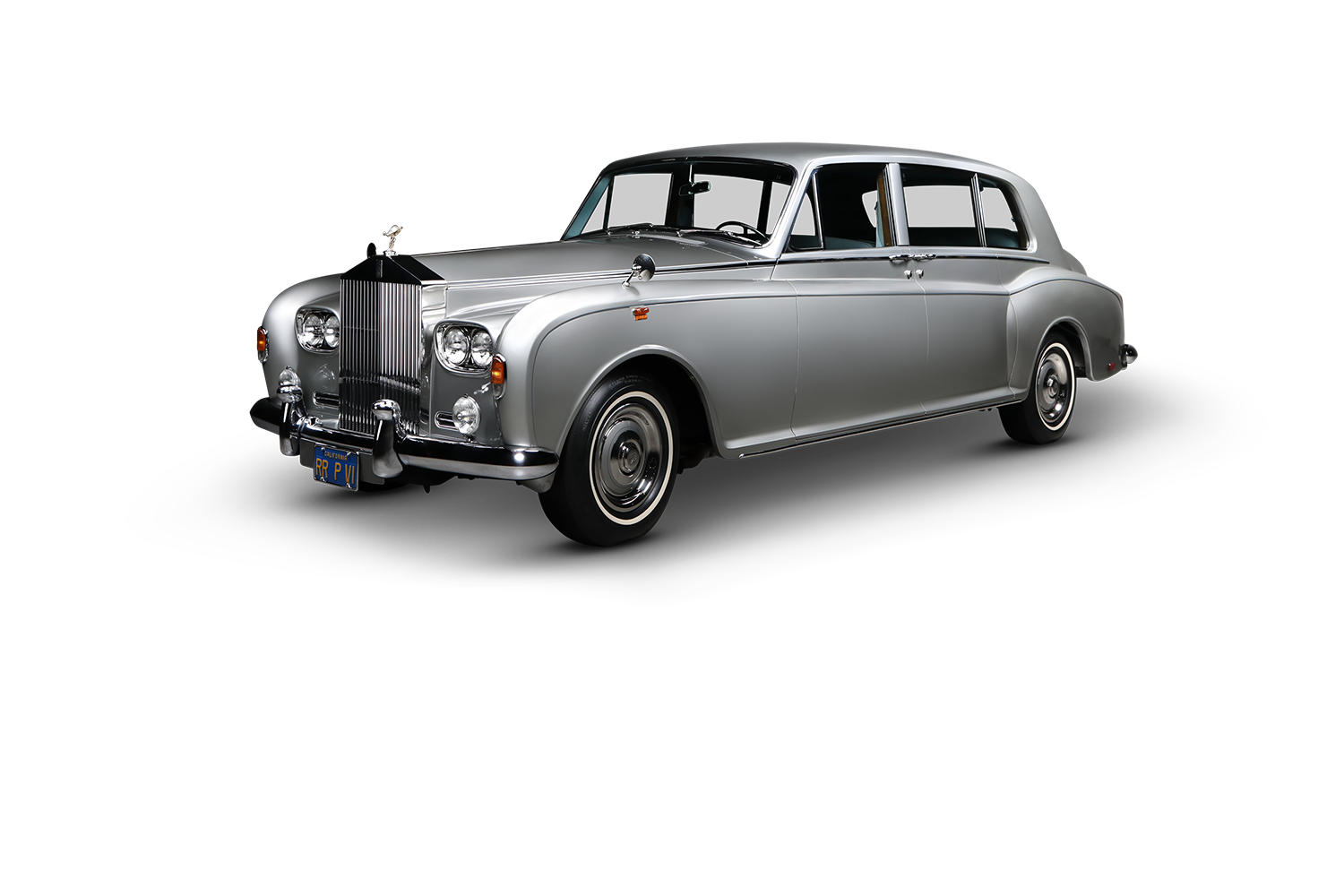 1972 Rolls Royce Phantom VI LimousineOnly 374 Rolls-Royce Phantom VI’s were built from 1968 to 1991. This was to be the end of the Phantom series, but in 2003 Rolls-Royce revived the Phantom series with Phantom VII, which was produced until 2017. This particular Phantom was delivered new in 1972 to Mrs. Michelle Foreman, Aegis Shipping Ltd., in Greece.
1972 Rolls Royce Phantom VI LimousineOnly 374 Rolls-Royce Phantom VI’s were built from 1968 to 1991. This was to be the end of the Phantom series, but in 2003 Rolls-Royce revived the Phantom series with Phantom VII, which was produced until 2017. This particular Phantom was delivered new in 1972 to Mrs. Michelle Foreman, Aegis Shipping Ltd., in Greece. -
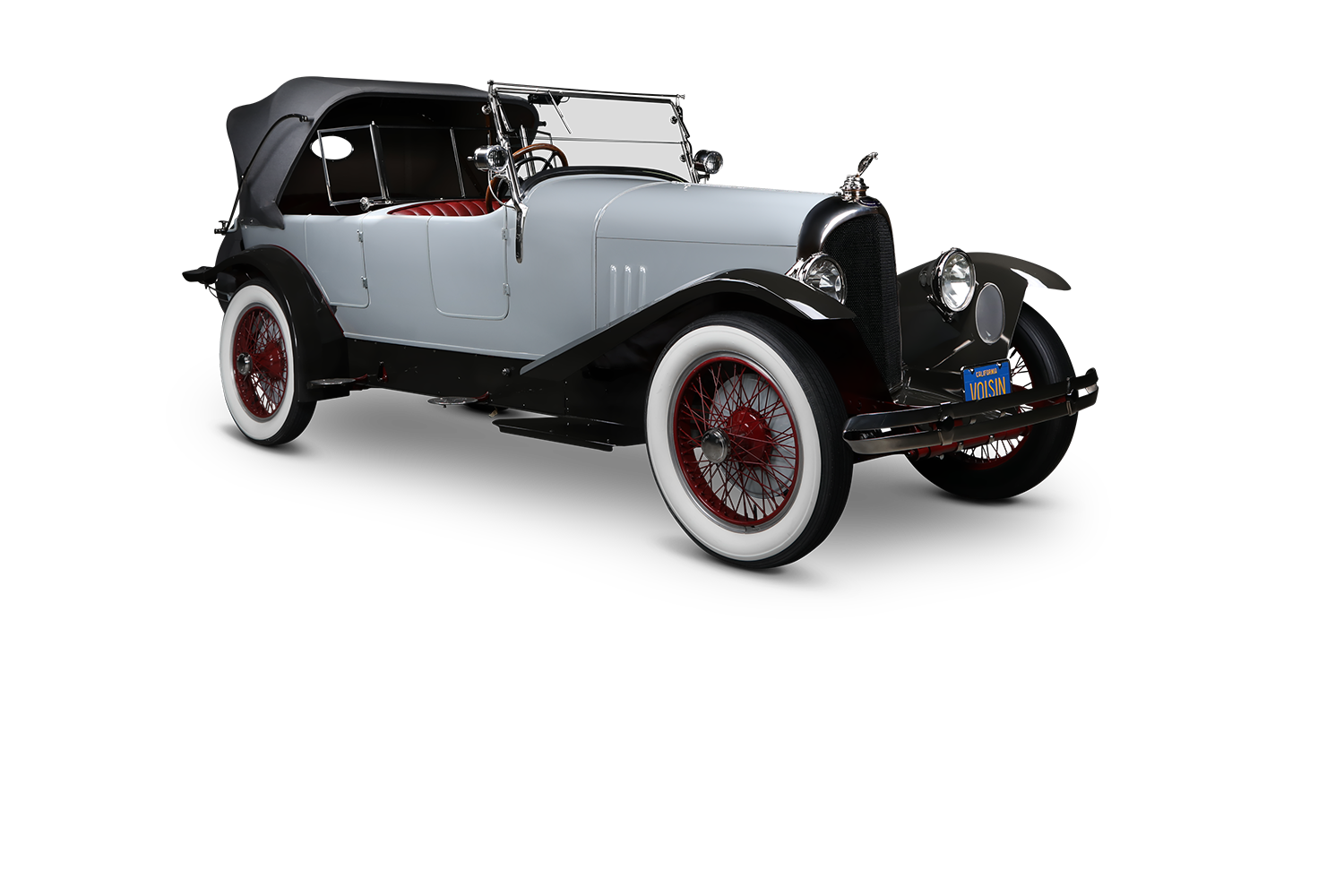 1923 Voisin Sporting VictoriaSilent movie star Rudolph Valentino loved fast, sporty, exotic automobiles. In 1923, at the height of his career, Valentino visited Paris and drove virtually every exotic marque. His choice was Voisin. He bought three, two he left in Paris and this one brought to Hollywood. The coiled Cobra mascot was a gift from Douglas Fairbanks and his wife Mary Pickford.
1923 Voisin Sporting VictoriaSilent movie star Rudolph Valentino loved fast, sporty, exotic automobiles. In 1923, at the height of his career, Valentino visited Paris and drove virtually every exotic marque. His choice was Voisin. He bought three, two he left in Paris and this one brought to Hollywood. The coiled Cobra mascot was a gift from Douglas Fairbanks and his wife Mary Pickford.
